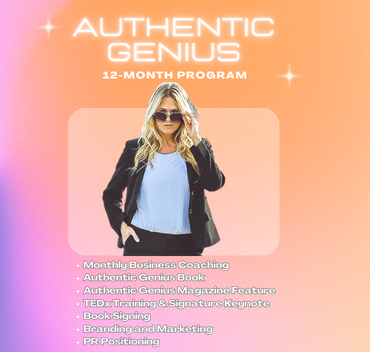
by Lisa Kirkwood
During almost two decades of employment in corporate America, while training for various jobs, I noticed that many businesses do not integrate DEI in everyday operations, and diversity training classes only go skin-deep if they are offered at all.
Some companies don’t even have a framework for Diversity, Equity, and Inclusion in their business model, let alone properly train their employees. Consequently, such businesses may face costly lawsuits arising from DEI issues among their employees or customers, that otherwise could have been avoided or addressed without cause for litigation.
Yet other organizations “live and breathe” Diversity, Equity, and Inclusion and have been doing so for many years before these three terms were even coined together as such. I had the privilege to work for such a company that integrated DEI at its deepest core, which helped me to realize how significant it is.
An overview of these timely and trendy topics of contemporary society clearly points out the fact that various communities throughout the world are highly divided due to lack of understanding of primary and secondary dimensions of diversity.
The diversity notion by itself is not enough; complemented by equity and inclusion, the three of them combined paint a clearer picture of what work groups and society in general could and should learn to implement for improved results.
Diversity, Equity, and Inclusion can be decoded and demystified, so people come together instead of drawing apart. But where do we even start to bridge the gaps? How do we know what diversity is and what it isn’t? And how can we tell the difference between various dimensions of DEI?
It is generally considered that gender, race, age, and disability are the main dimensions of diversity.

Gender identity & expression, and sexual orientation are complex, ongoing issues, and highly controversial. However, we must learn to acknowledge this fact, communicate effectively, and treat everyone with dignity and respect, the way we like to be treated.
Race, ethnicity, and color, shape up and affect individual personality and collective mentality. Addressing colorism and combating racism are top priorities for some social and work groups, but not for others. Yet, beyond skin tone, we are all human beings with the same structure and pursuing similar goals.
Good leaders can utilize extensively and effectively people’s personal background, life experience, and professional qualifications, regardless of their age. Generational issues are real, especially in the workplace, where management must find the means to integrate people of all ages.

Age is just a number, and seasoned professionals can share insights with younger peers to build stronger, more successful teams.
Disability is often a misnomer for diverse abilities that can be leveraged within highly efficient groups. Abilities, disabilities, and the relationships between people with one trait or another can be uneasy sometimes, yet business has to continue, nonetheless.
Secondary dimensions of Diversity, Equity, and Inclusion can be just as important as primary ones. Identifying and exploring “the underside of the iceberg” may be difficult based on one’s individual understanding of more subtle cultural concepts, for example. How deep these can go is a perpetual question.
Diversity is a fact. Equity is a choice. Inclusion is an action. Belonging is an outcome.
For these reasons and many others, I created Higher Dimensions of Diversity, Equity, and Inclusion, an innovative and extensive approach to address such notions from multiple angles. This is a comprehensive educational program for both academic and business environments, that empowers people of all walks of life to acknowledge, embrace, integrate, and leverage the notions of DEI for personal, social, and business success.
This program originates from and is based on an Eastern European, Romanian American, and personal perspective, offering broader views on the world from a first-person narrative, and is meant to shed light on aspects of multilingual and multicultural diversity that may otherwise be unavailable to a homogenous group of people.
This is also an important tool for HR professionals who know that hiring, training, and retaining diverse talent will increase employee motivation and engagement within a diversified and productive workforce.
HR also needs effective policies to deal with “the elephant in the room” – identify and properly situate potential cases of gender discrimination, sexual harassment, and the “Me Too” movement in the workplace.
Small, medium, and large size businesses with more than 10 employees and/or a diversified workforce can greatly benefit from equitable hiring, proper training, and diverse employee retention to increase team spirit and business growth.
There’s a strong case to be made for women’s leadership and empowerment. Not because it’s a fashionable term, but because it’s the right thing to do.
Among other factors, women’s competence, multitasking, and innovative ways of running day-to-day activity are tremendous assets to promote and leverage talented and diverse teams that achieve outstanding results.
Not only does that bridge the gender gap, ultimately, encouraging, training, and promoting women leaders will bring peace and “balance to the force”. The current social model must change and be replaced by a global society based on healing, positivity, and harmonious relationships.
Language, culture, and religion define an individual and a group in a cosmopolitan context. We can remove language barriers, learn from foreign cultures, acknowledge commonalities and differences, and respect religious diversity.
We can understand each other regardless of spoken language, find common ground, and communicate clearly and efficiently in the universal language of love.
Culture means different things for different people in different parts of the world. And multiculturalism can empower those who seek to gain insights and build bridges through mutual respect and appreciation.
Religion continues to be a topic that causes major social rifts that need to be addressed in a safe, non-confrontational manner. This is no easy feat, considering the many religious views that people hold worldwide. The human search for the divine continues.
An open-ended conclusion is that there are many other dimensions to DEI, many facets of the same diamond. At least the most important dimensions can and should be understood at a deeper level. To apply key principles of DEI in one’s personal, academic, and professional life is to achieve greater social and business success.
Let’s keep the conversation going, walk the talk, and live a life based on Diversity, Equity, and Inclusion principles!
We are here to support one another, succeed, and make this world a better place!




